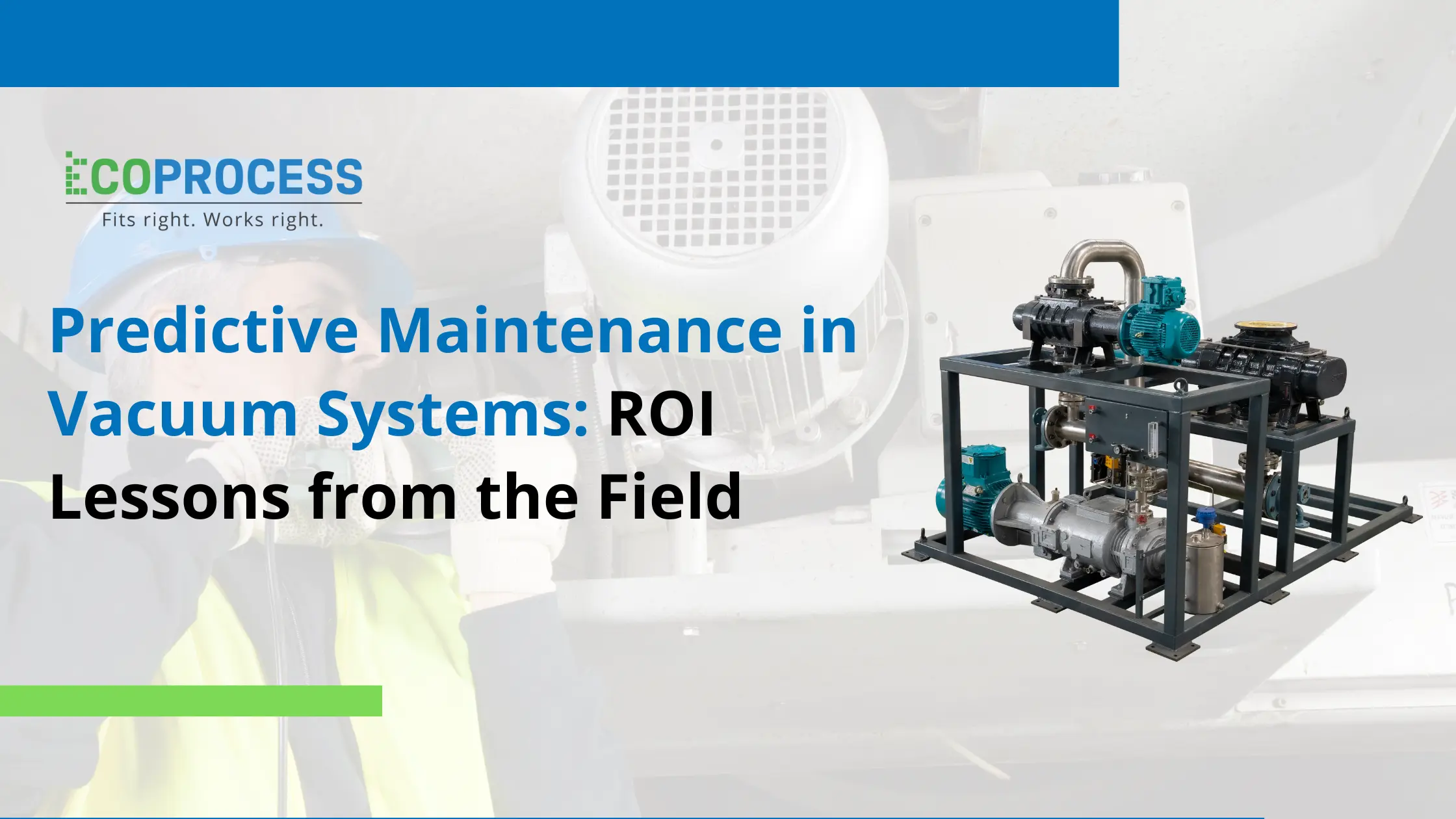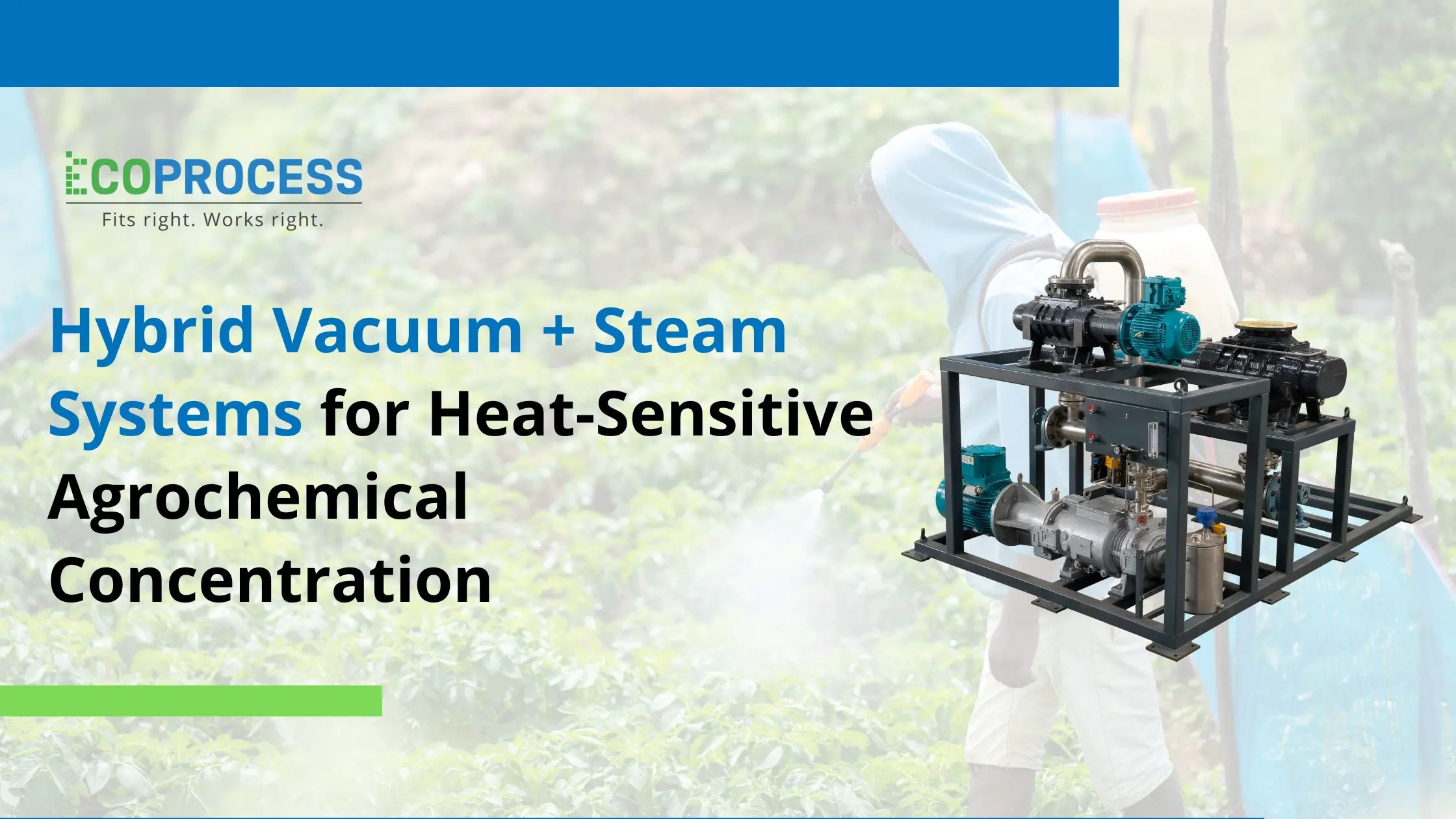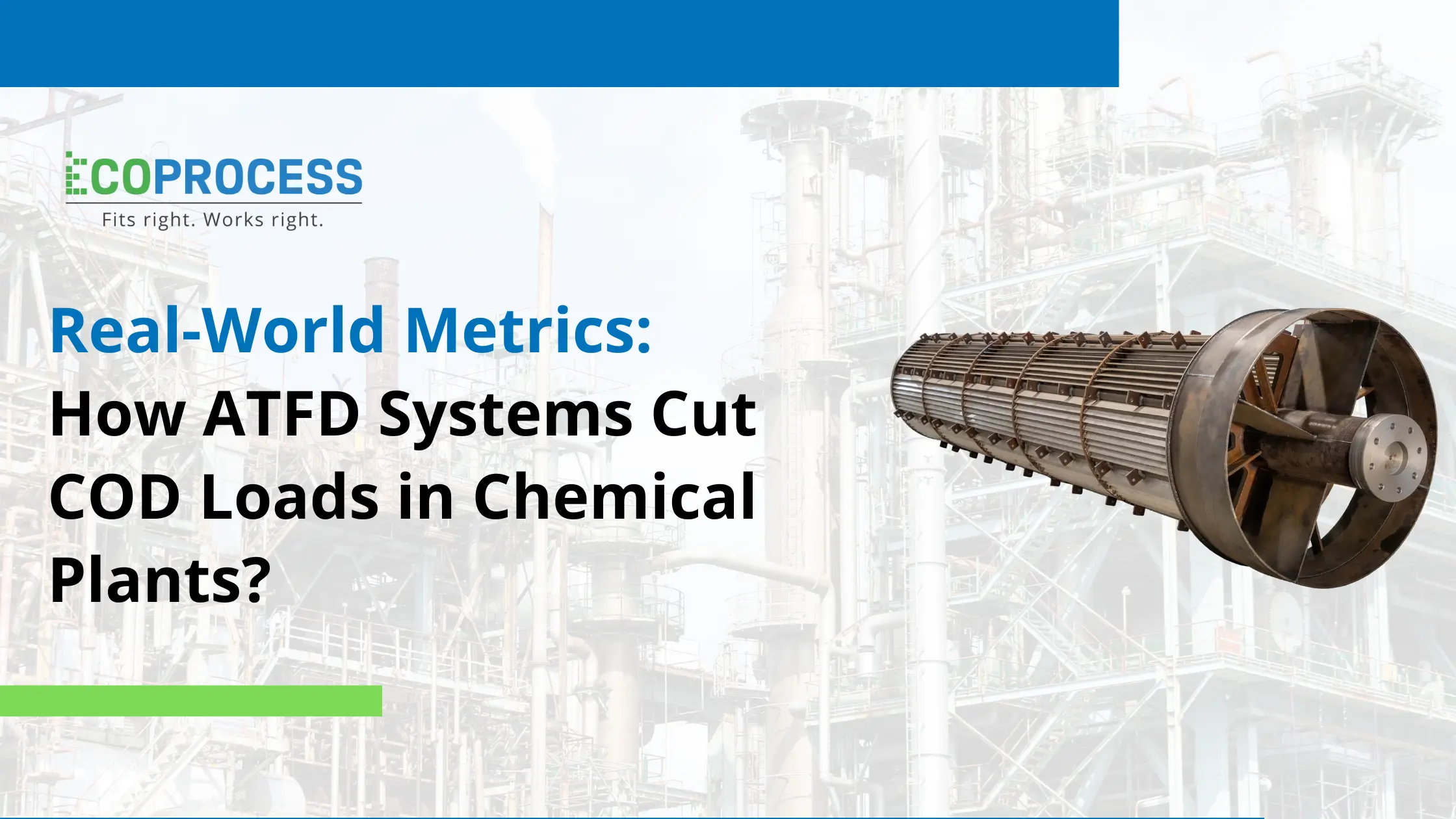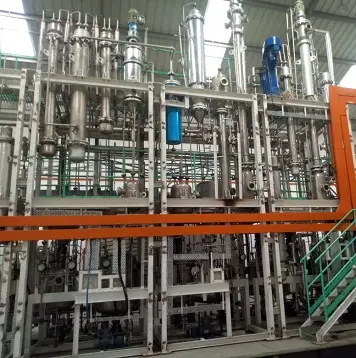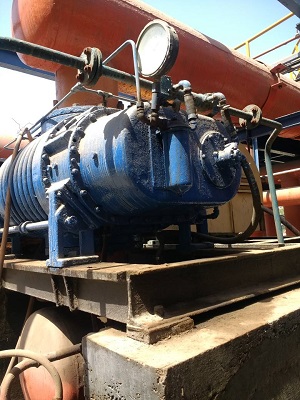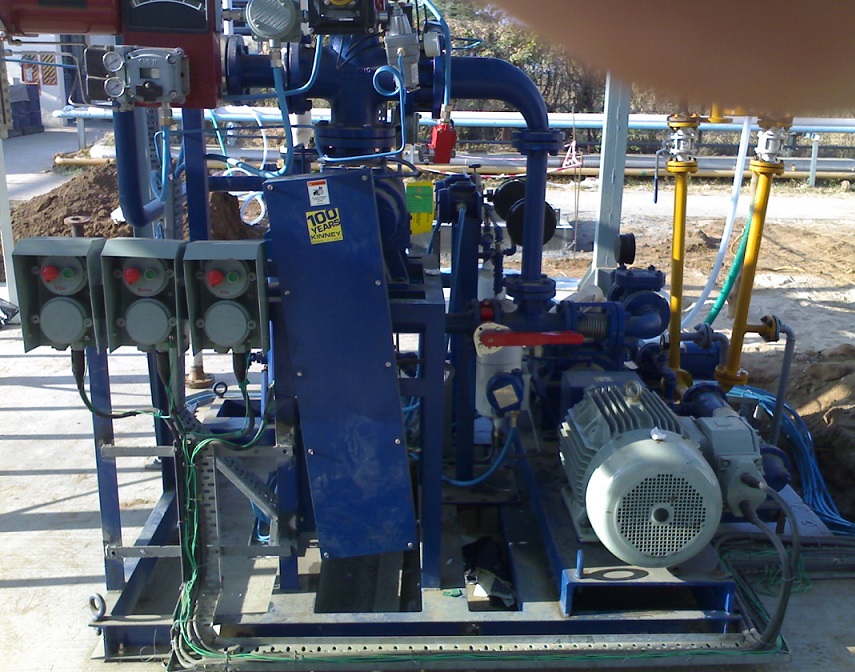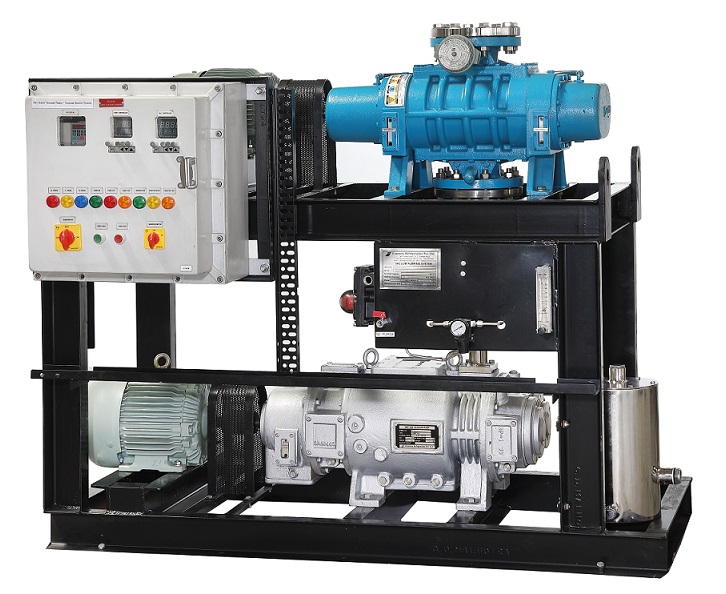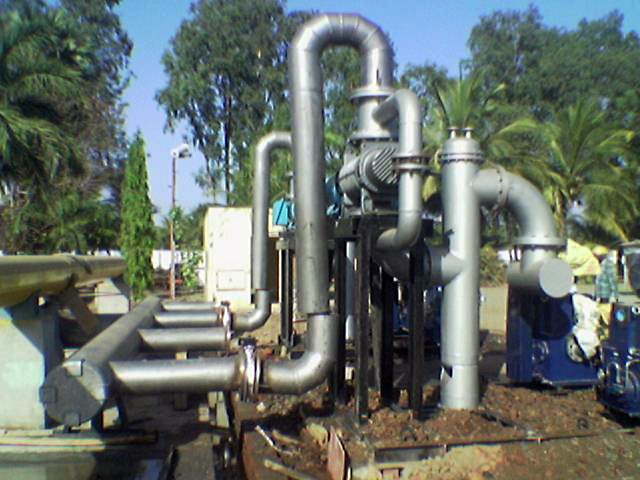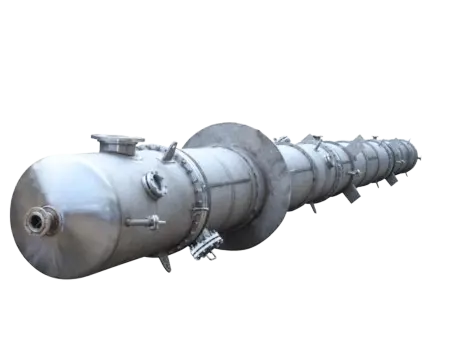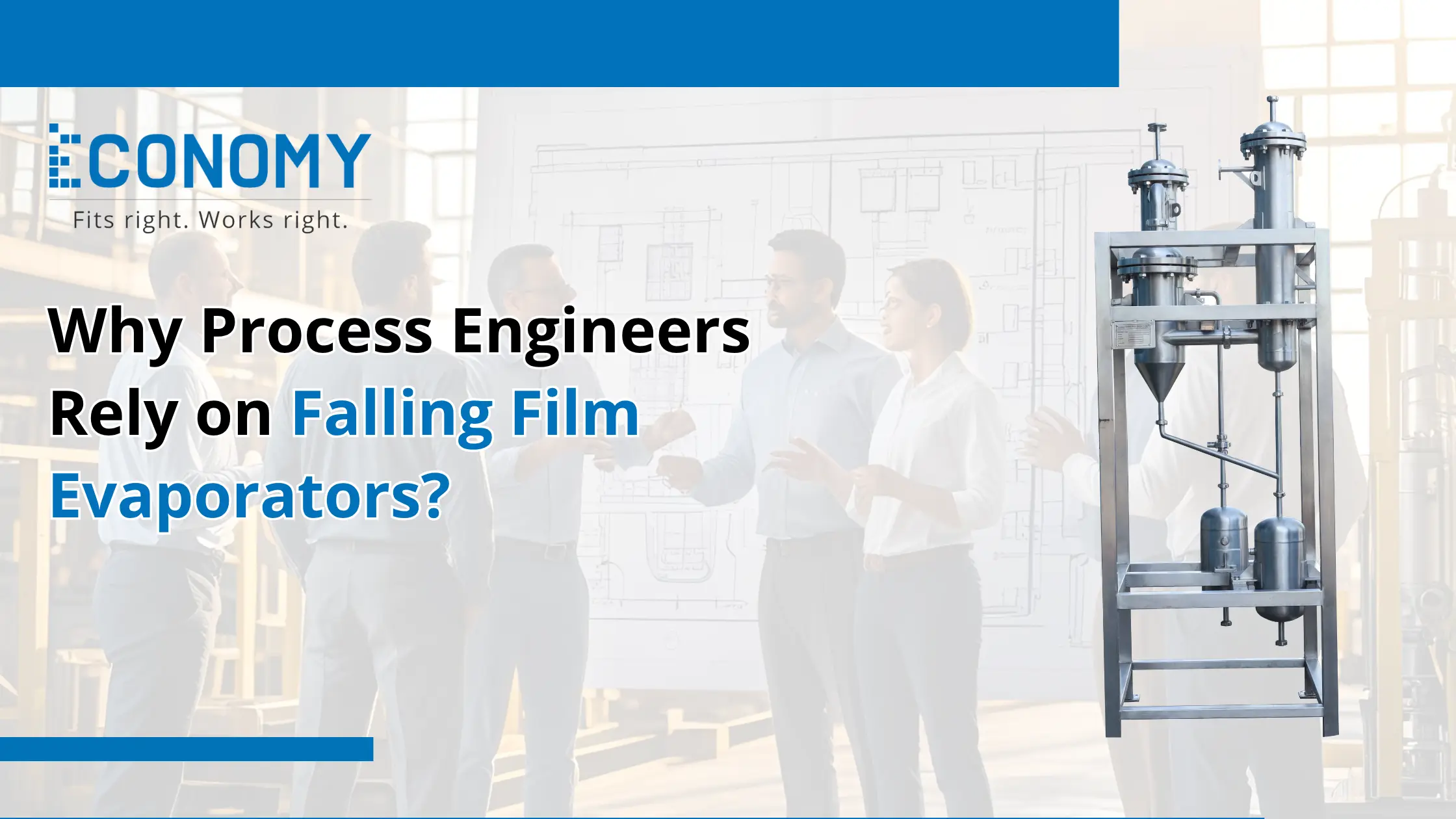
Why Process Engineers Rely on Falling Film Evaporators
For processes across food processing, pharmaceuticals, chemicals and wastewater management, separating mixtures well and at a low cost is very important.
Because of their high efficiency, low energy use and safe heat, falling film evaporators are valued for handling heat-sensitive items. In this blog, we will look at the function of falling film evaporators, the main reasons engineers choose them, the features of EPS products, cases of the technology being used and the key benefits it offers.
Working of Falling Film Evaporators
Falling film evaporators depend on a simple but reliable idea to work. The feed is added to the top of the evaporator and spreads evenly as a thin film across the inside of the vertical tubes. Because of gravity, the liquid film runs downward, and steam or another heating substance is applied around the tube bundle from the outside. While the film is in use, it heats up fast, which causes the solvent (usually water) to evaporate swiftly.
After this happens, the gas rises above and is separated from the other liquid below. The vapor can be taken from the plant steam or used as a potential energy resource for an evaporator system. Most of the system’s effectiveness depends on a thin, even film that moves heat very quickly with little damage to the material.
Benefits Over Other Types
Compared to forced circulation, rising film and plate evaporators, falling film evaporators are unique. That’s why process engineers stick with this technology year after year.
1.Energy Efficiency
Because falling film evaporators use gravity instead of pumps, they consume much less energy. Furthermore, they can manage lower temperature distances, so they match well with both multi-effect systems and mechanical vapor recompression settings and save more energy.
2.A residence time that is low.
A favorite aspect for users is the efficiency of treatment in a short time. This mat means the liquid is not exposed to heat for very long, so it’s less likely to break down thermally. This is very important in the food and pharmaceutical sectors, where product quality and its nutrients are very valuable.
3.Effective Heat Transfer
As a thin film helps heat move faster and more efficiently, helping the process speed up. As a consequence, smaller equipment is used to produce the same amount, which allows for reduced capital and space costs.
4.Processes for Heat-Sensitive Things
As these products are heat-sensitive, the falling film evaporator is perfect as the materials are processed outside the thin film tube.
5.Ease of adjusting and useful in many ways
When used either individually or together in series, these evaporators are able to process a wide variety of viscosities and different products. Being modular, they are simple to expand, making them appropriate for both control and major-scale manufacturing.
EPS Product Specs
EPS (Evaporator Processing Systems) designs and supplies energy-efficient evaporation that are adjusted to fit various industries’ requirements. Check out the usual details about products that EPS systems provide below:
Material of Construction: SS304 / SS316 / Duplex Steel / Hastelloy (depending on the corrosiveness of the media)
-
Tube Diameter: 25.4 mm (1 inch) or customized
-
Tube Length: 3 m to 12 m depending on capacity
-
Capacity Range: 500 LPH to 100,000 LPH
-
Number of Effects: 1 to 7, customizable
-
Heating Media: Steam, hot water, or thermic fluid
-
Cooling Media (for condensers): Water or chilled water
-
Automation: Semi or fully automatic control panels with PLC/SCADA
-
Special Features:
-
CIP (Clean-in-Place) systems
-
Energy recovery systems
-
Variable frequency drives for feed control
-
Anti-foaming systems for specific applications
-
EPS also provides complete turnkey solutions, including design, fabrication, installation, and commissioning, with post-installation support
Use Cases
Falling Evaporation systems are used in many different industries. You will find that they are used most often in these areas:
1. Food and Beverage.
Carried out mainly to concentrate fruit juices, milk, tea extract, coffee concentrate and sugar syrups. Low temperatures during processing keep the food tasting good and looking attractive and nutritious.
2. Pharmaceuticals
Suitable for extracting herbal substances, enzymes and API molecules without causing them to degrade. Pharma standards require their temperature control to be very precise.
3. Chemical Industry
Designed to take out solvents or focus on the presence of chemical intermediates and byproducts. Evaporators without a baffle are suitable for use with harsh and reactive materials when properly constructed.
4. Wastewater Treatment
The handling of these wastes in zero-liquid discharge (ZLD) systems involves evaporating liquid hardware, resulting in dry, residual waste. This becomes especially important for industries governed by tough environmental laws.
5. Biofuels and fermentation.
They are used in bioethanol and fermentation to strengthen thin stillage and its byproducts for either reuse or further refining.
Conclusion
Falling film evaporators are essential in today's process engineering. The fact that these devices use less energy, have little product loss and can be used in many industries makes engineers and plant designers prefer them. Industrial evaporator suppliers like EPS have taken this technology to a new level by supplying custom systems that work well and are easy to budget.
Because industries seek to produce sustainably, save energy and achieve top quality, industry sectors are likely to rely on falling film evaporators. For process design, saving energy or optimizing products, using a reliable falling film evaporator may completely change your process for the better.
FAQs
Q1: What are falling film evaporators?
Falling film evaporators are heat exchangers where liquid flows as a thin film inside vertical tubes, evaporating quickly due to external heating, ideal for heat-sensitive and concentrated products.
Q2: How are falling film evaporators energy efficient?
They use gravity-driven flow and operate at low temperature differences, often integrated with multi-effect or MVR systems, reducing steam consumption and improving thermal efficiency across processes.
Q3: Where are falling film evaporators commonly used?
They are widely used in food processing, pharmaceuticals, chemicals, and wastewater treatment for concentrating liquids without damaging heat-sensitive components or compromising product quality.
Q4: What makes EPS falling film evaporators reliable?
EPS evaporators feature robust construction, custom designs, automated controls, and energy-saving systems. Their proven performance across industries ensures consistent output, easy maintenance, and long-term operational reliability.
